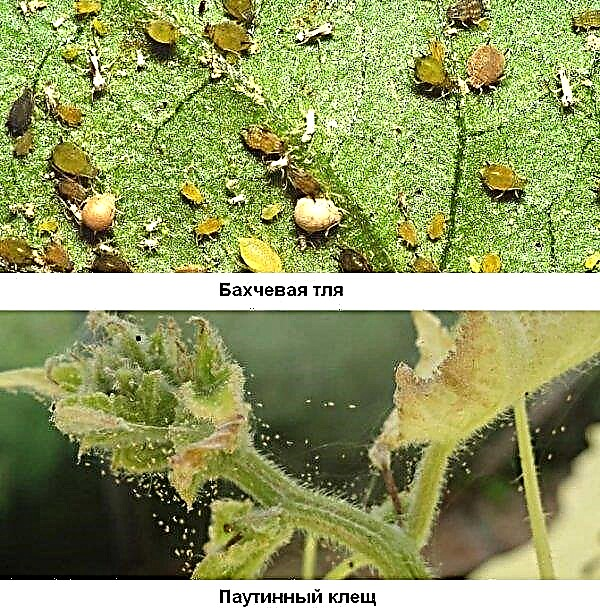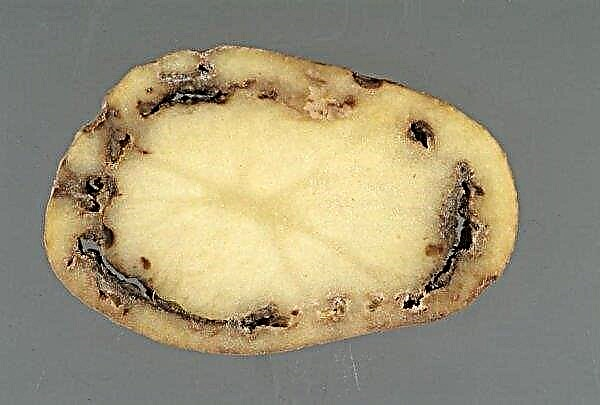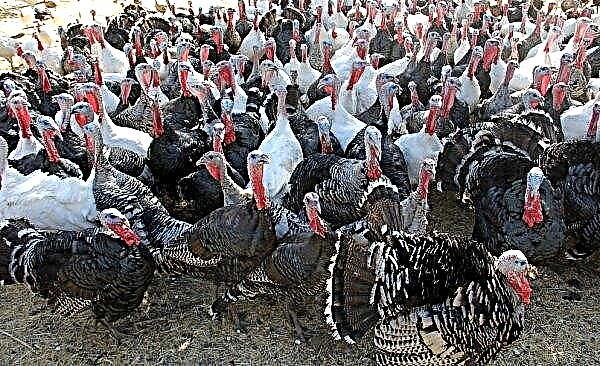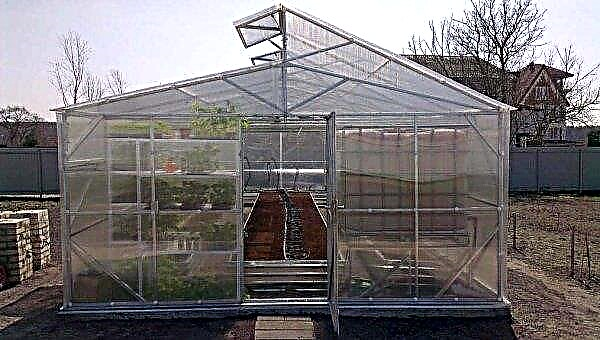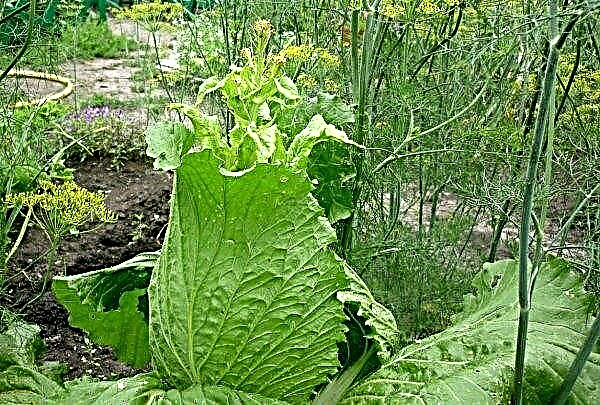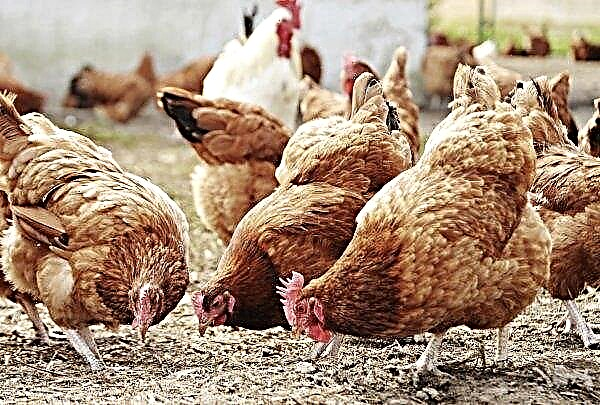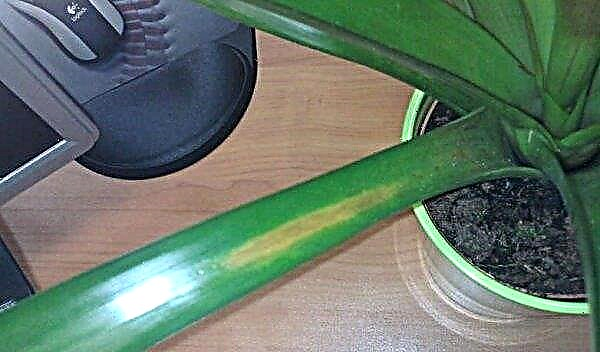With the onset of the cold season, bees begin to wax all the cracks in the hive with wax and prepare to winter. A successful wintering will ensure vigorous activity of the bee family in spring and summer, the quality and quantity of honey collection. How to organize the winter period in the apiary, prepare wintering places and provide care for bee families - read below.
What is the danger of colds for bees?
Honey bees in the process of evolutionary development adapted to low temperatures. A healthy and strong bee family, with a sufficient amount of feed, is able to winter in frosts up to –40 ° C without additional warming.
Being heterothermal insects, bees are able to regulate body temperature depending on the functional activity of the body and under adverse environmental conditions. During the period of activity during the flight, the bee's body temperature is + 36 ... + 38 ° С. A single bee stops moving at a body temperature of + 13 ° C, and at a temperature of + 8 ... + 9 ° C it stiffens.
Inside the hive with the onset of late autumn and a drop in air temperature to + 14 ° С, the vital processes of bees slow down to a minimum, and they are grouped into a winter club (a dense, compact mass of 30–35 thousand insects in the form of an elongated ball). All the energy of insects is spent on heat generation, maintaining the temperature + 20 ... + 25 ° С in the center of the club and + 15 ... + 18 ° С - on the surface of the cluster. In addition, bees develop immunity to cold, and each subsequent generation is able to tolerate lower temperatures more easily.
Can bees winter in the barn?
Wintering is the most important and difficult period for the bee family and one of the priority tasks facing beekeepers. Indeed, on how the wintering takes place, the active life of the bee family in the spring depends.
Many beekeepers leave hives on the street for wintering, if the winters are quite mild and short-lived. But in cold regions with a long winter period (up to 5–7 months) or in regions with sharp fluctuations in day and night temperatures (+ 5 ... –20 ° C), it is better to place hives in the room.
The location of the hives must be selected carefully: it must be dry, well ventilated in the spring and protected from winds in the winter, located away from the noise of carriageways and pedestrian roads, residential buildings.In order for bee families to safely survive the cold season and begin spring honey harvesting, the beekeeper needs to take care of the wintering place, warming the hives and food supplies for bees. Wintering of the bee family can be organized in the barn, if the average outdoor temperature does not fall below –17 ° C, there are no sharp fluctuations in temperature. In this case, it is necessary to take care of creating the appropriate microclimate, providing protection from wind and cold air, to insulate the walls and ceiling.
A wintering shed must meet the following conditions:
- the size of the barn should correspond to the standard size of the hives;
- at the front door to provide insulation, creating a vestibule and sheathing the door with insulating material;
- the floor should be clay or from loose gravel up to 20 cm in height;
- provide access to the shed for the transport of beehives;
- placing the shed in an elevated place will provide the necessary humidity, and hedges, trees and shrubs will provide protection from the wind;
- good ventilation is needed in the barn;
- the room should be dark, without windows and light sources;
- when using electricity, in order not to disturb the bees, use only lamps with red shades or use lights with a red filter, to which the bees do not respond;
- close up all the cracks, set traps for rodents and lay out the bait, providing protection;
- to ensure silence in the room by placing the shed away from noise sources (residential building, livestock buildings, road).
It is advisable to coat the walls of the barn with clay, plaster and insulate from the side of the street and the attic, cover the floor with a thick layer of dry leaves, grass or straw. With a deep occurrence of groundwater, you can dig a trench in the barn, cover the bottom with litter and place the hives, covering them with mats from reeds or straw. Hives can be insulated with roofing material.
In the room you can hang a thermometer to control the temperature and a psychrometer to measure humidity. It should be remembered that winter cold is more beneficial for insects than greenhouse conditions. Cold should act as an ally in the matter of natural selection and increase immunity. If all these requirements are met, the bees successfully winter in the barn.Did you know? Caring for the cleanliness of the hive, in winter, bees do not empty the intestines at all.
Primary requirements
Providing a favorable wintering for the bee family, it should be remembered that it is not cold and temperature conditions that are harmful to insects, but the absence of silence and ventilation, dampness and strong winds.
Ventilation
In the summer, during vigorous activity, the humidity in the hive of the bees is maintained independently: by ventilating with excess moisture or bringing water to the hive with a lack of moisture. In winter, with a decrease in the activity of bees, the beekeeper should take care of ventilation. Ventilation is necessary for constant air exchange in the room, while in the winter house the air temperature decreases and humidity is normalized. Ventilation is especially important at the end of wintering, when a brood appears, and the amount of carbon dioxide produced by bees increases dramatically, and oxygen demand increases.
Ventilation is necessary for constant air exchange in the room, while in the winter house the air temperature decreases and humidity is normalized. Ventilation is especially important at the end of wintering, when a brood appears, and the amount of carbon dioxide produced by bees increases dramatically, and oxygen demand increases.
The ventilation of the hives themselves can be regulated through the upper and lower notches, or through the ceiling - warm air exits through the upper notches and the ceiling, and fresh air enters through the lower.
With insufficient ventilation, the air in the hive stagnates and settles in the form of condensate on the walls and combs. This leads to lower club temperatures and additional energy and feed for heating.
From dampness, mold and fungus appear, which leads to insect diseases. Therefore, dampness is considered the most adverse wintering factor.Important! Honey in honeycombs with high humidity is saturated with moisture, fermented and becomes poor-quality food for bees.
The optimum air humidity that should be maintained during wintering is 75–80%.
Temperature
It is desirable to maintain the temperature in the winter house at a constant level without sharp fluctuations (+ 2 ... + 4 ° С). A slight drop in temperature will not harm the wintering bee family, but excessive heat can destroy it.
The energy costs of the bees depend on temperature to provide the necessary microclimate inside the hive. With a large expenditure of energy, brood is reduced, bees age faster, and are less active during the spring departure, their productivity decreases.
Strong winds can also disturb the microclimate in the hive during the winter, by blowing out the dwelling of insects. At the same time, part of the heat is lost, and the bees are forced to replenish losses due to their energy in order to maintain the club's heat. Therefore, apiaries are protected by trees, shrubs or hedges. At hibernation you can protect the hives from the wind with grass mats, roofing paper, roofing material, or sprinkle snow on the sides. Over time, an air space forms between the hive and the snow drift, which prevents heat loss.
Important! A decrease in temperature by 10 ° C relative to the optimum doubles the energy consumption of bees.
Location
The room for wintering of bee colonies should be dried and ventilated.
The correct location of the hives will ensure the economical use of space and observation:
- Before installing the hives in the winter house, the doors are closed so that troubled bees do not leave the house.
- You must move the hives carefully, trying to avoid shocks and bumps, you can use a stretcher or transport on a trolley.
- Hives indoors are placed in two or three tiers, if space allows. For this purpose, racks or shelves can be equipped at a distance of 40 cm from the floor.
- Beehives are set in rows, placing the slots inside the room.
- When the bees calm down, after installation it is necessary to open the doors and put up the barriers from rodents.
- Beehives are set at a distance of 10 cm from the walls of the room and leave 90 cm for passage to ensure monitoring of the wintering.
- Weak families should be placed on the upper tiers or away from the door.
- After installation, it is necessary to provide enhanced ventilation for 2-3 days so that condensation does not form on the walls of the hives.
Video: Wintering the bees in the barn
Features of care for the hive and bees in the winter
When there is steady frosty weather, but there is still no permanent snow cover, it is time to bring the bees into the barn. This usually happens in November for the northern regions and in December for the southern ones.
Experienced beekeepers decided the question of when to bring the bees to winter, on the basis of long-term observations and came up with the rule: later bring the hives into the room and earlier take them out in the spring.
Important! In the room where the bees hibernate, you can not store vegetables, substances with a pungent odor (kerosene, paints).
Caring for the hive and bees in winter consists of the following activities:
- For the winter, each family needs to leave 10–20 kg of honey and a couple of beef frames, which serves as a source of protein for bees and is necessary when a brood appears. Wintering in warm rooms, bees consume less food than wintering in the street. It is advisable to prepare the stocks and place them in the hives in advance so as not to disturb the bees at rest.
- In the first months (until February), it is better not to enter the winter house. The only event at this time will be the layout of rodent baits, temperature control and ventilation regulation.
- You need to enter the room without too much noise, use red lights.
- If the room is too cold, you can warm the hives with rags, sawdust or polystyrene. Such insulation will provide additional silence and dryness of air.
- Starting in February, a visit to the winter house should be carried out more often to monitor the condition of bee families, to notice and eliminate shortcomings in time. Control temperature and humidity every five days.

The state of the bees can be judged by the published hum inside the hive:
- quiet and subtle buzz - everything is in order with the bee family, and wintering is going well;
- buzzing - improper wintering temperature (above + 4 ° C), stuffiness, bees are thirsty;
- weak buzz and unfriendly hum - the feed is over, and it is urgently necessary to feed;
- no solid buzz, bees buzz individually - most likely, the uterus died.
You can listen to each hive with the help of a rubber tube inserted into a notch or a phonendoscope. But only an experienced beekeeper can correctly judge the condition of families by buzzing.
Other wintering methods
In addition to wintering in the barn, you can organize wintering by placing hives in the attic or under a canopy.
In the attic
For wintering in the attic, you need to choose a slope under the roof, stuff it with dry leaves, grass or straw and build an impromptu wall. Hives are located near such a wall so as to provide a free approach and good ventilation.
Video: Wintering bees in the attic
If the attic is located above the heated house, the hives are placed directly on the floor without additional insulation. The floor of the cold attic can be insulated with mats of 18 cm. The rest of the procedure for installing hives in the attic is the same as in the barn.
In addition, it is necessary to darken the attic or close the doors with nets or planks. You can use cones or ligaments of reeds. There should be no smoke or noise in the attic, and mice are less likely to visit attics.
Did you know? Brazhnik butterfly can imitate the sounds of the queen bee and is a dangerous pest.
Under the canopy
Wintering under a canopy that protects the hives from precipitation is in any case better than in the open. But the lack of snow in severe frost, as well as winter winds and frosts require additional shelters.
It is desirable to arrange the canopy on the south side of the house. From the side of the house, leave a space of 20 cm and fill it with dry grass or sawdust.
Wind protection is organized using bricks, foam blocks or slate. Beehives can be insulated with mats from reeds or straw, or wrapped with roofing paper and roofing felt. This provides natural ventilation.
In the case of a snowy winter, a 30 cm layer of snow thrown around the hives will cope well with warming.
The organization of the proper wintering of bees is considered an indicator of the skill of the beekeeper. A healthy and strong bee family will come to the spring gathering with minimal losses and with a good brood, ensuring high productivity.

